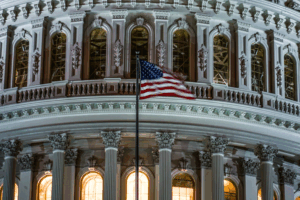US HY vs Lev Loan Fundamentals Comparison (4Q24)
Winnie Cisar - Global Head of Strategy, CreditSights
Zachary Griffiths, CFA - Head of IG & Macro Strategy, CreditSights
Logan Miller - Head of European Strategy, CreditSights
Brian Perez - Analyst, Credit Strategy, CreditSights
Kathleen Tang - Analyst, CreditSights
22 May 2025
We provide an update to our US HY vs Leveraged Loan comparison for 4Q24, using leverage metrics for constituents in the US HY ICE/BAML index and leveraged loan data from Bixby Research and Analytics to assess net leverage, EBITDA margins, interest coverage and cash balances, in aggregate and at the rating level. The extended fiscal year-end filing deadline for private loan issuers results in a longer lag for the publication of 4Q fundamentals compared to loan data for other quarters.
Net leverage continued to drift sideways across the aggregate leveraged loan and HY bond markets, with a slight tilt towards deleveraging. Deleveraging was most pronounced in the top quartiles (issuers with the highest net leverage) of the public and private loan markets, where net leverage declined by 1.1x to 5.2x and by 0.8x to 8.7x, respectively. However, despite material QoQ deleveraging across segments of the discrete public and private loan universes, changes in net leverage at the aggregate level were relatively subdued; this is due to the evolving composition of public versus private loan issuers, with the former typically maintaining lower leverage ratios compared to the latter.
In the top quartile of the total loan universe, net leverage decreased by 0.3x to 8.4x, standing a turn below the post-Covid (1Q22–present) average and two turns below the historical (1Q20–present) average. The bottom and median quartiles remained stable QoQ at 3.4x and 5.6x, respectively, each within half a turn of both post-Covid and historical averages.



